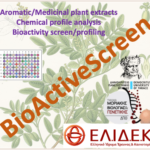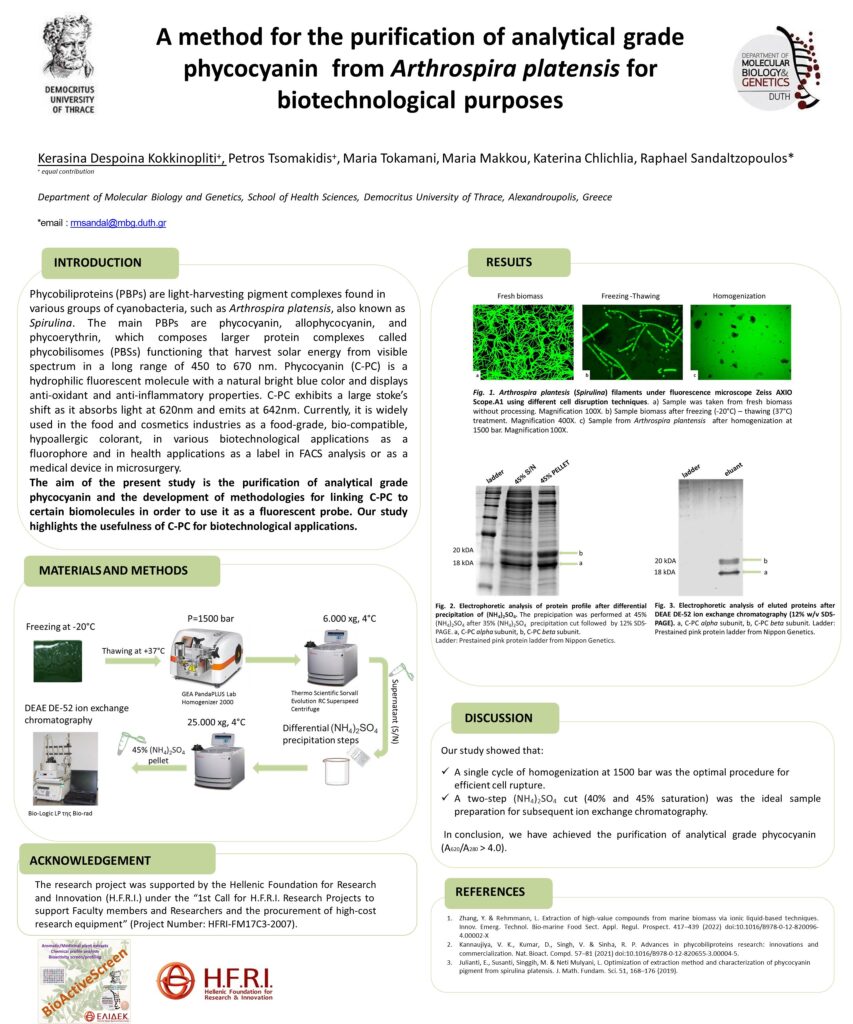A method for the purification of analytical grade phycocyanin from Arthrospira platensis for biotechnological purposes
Kerasina Despoina Kokkinopliti, Petros Tsomakidis, Maria Tokamani, Maria Makkou, Katerina Chlichlia, Raphael Sandaltzopoulos
Phycocyanin (C-PC) is a protein found in cyanobacteria, such as Arthrospira platensis, also known as Spirulina. C-PC is a hydrophilic fluorescent molecule with a natural bright blue color and exhibits anti-oxidant and anti-inflammatory properties. C-PC belongs to the family of phycobiliproteins and along with allophycocyanin (APC) and phycoerythrin (PE) composes larger protein complexes called phycobilisomes (PBS), which play an important role for bacteria survival in different environments. These proteins harvest solar energy from visible spectrum in a long range of 450 to 670 nm and relay photons to the photosynthetic center. C-PC exhibits a large stoke’s shift as it absorbs light at 620nm and emits at 642nm. Currently, it is widely used in the food and cosmetics industries as a food-grade, bio-compatible, hypoallergic colorant, in various biotechnological applications as a fluorophore and in health applications as a label in FACS analysis or as a medical device in microsurgery. In our study we extracted C-PC from fresh Arthrospira platensis biomass via mild homogenization of cells. Then, we purified C-PC to analytical grade exploiting a combination of differential ammonium sulfate precipitation steps and ion-exchange chromatography techniques. We have evaluated the quality of the produced C-PC, its stability and solubility and we are developing methodologies for linking C-PC to certain biomolecules in order to use it as a fluorescent probe. Our study highlights the usefulness of C-PC for biotechnological applications

Backround by pikisuperstar on Freepik
Contact bioactivescreen.duth@gmail-com
The project was supported by the Hellenic Foundation for Research and Innovation (H.F.R.I.) under the “1st Call for H.F.R.I. Research Projects to support Faculty members and Researchers and the procurement of high-cost research equipment” (Project Number: HFRI-FM17C3-2007)


